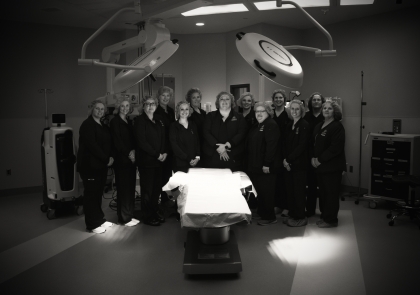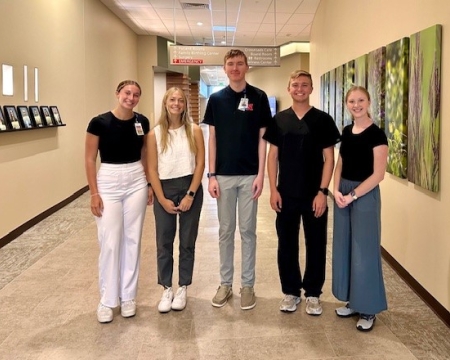
Did you know that rural, critical access hospitals have better surgical outcomes?
Don't just take our word for it. You can learn more by reading the following article written by Heidi Splete.
Competitive surgical outcomes observed at critical access hospitals
Thirty-day mortality rates for several common operations were not significantly different for patients seen at “critical access” hospitals, compared with larger high-volume facilities, according to a study using a large, national Medicare database.
The findings suggest that such procedures can be performed safely in smaller, rural hospitals. The Medicare Provider Analysis and Review (MEDPAR) file was used by investigators to examine data from 2009 through 2013 on more than 1 million patients at both types of facilities. The findings were published in JAMA on May 17.
The study was important to conduct for two reasons, coauthors Dr. Andrew Ibrahim and Dr. Justin Dimick of the University of Michigan, Ann Arbor, said in an interview.
“First, this study helps inform important policy decision making regarding rural access to surgery. Critical access hospitals receive more than $9 billion dollars annually from Medicare under payment provisions established in the Medicare Rural Hospital Flexibility Program to help keep them financially viable,” they said. “Plans to modify and even eliminate this program have been proposed largely based on studies demonstrating lower quality of care for common medical conditions (such as heart failure, pneumonia, or heart attack.) This study provides important information about common surgical procedures done in these same hospitals,” they stated.
“Second, this study gives us a better understanding of how to ensure safe surgical care without limiting access for common procedures. We have years of research demonstrating that relatively rare, complex operations (such as open heart operations and cancer resections) should be centralized to high-volume centers where patients travel to obtain their care,” the researchers said. “On the other end of the spectrum, this paper describes common, less complex operations where it is safe for patients to stay at their local hospital without the burden of traveling. This is particularly important now as large health case systems are consolidating and developing strategies to regionalize procedures within their network,” they noted.
The researchers and their colleagues reviewed data from 28,512 patients treated at critical access hospitals and 1,603,392 seen at non–critical access hospitals (JAMA 2016;315:2095-2103. doi:10.1001/jama.2016.5618). The patients underwent one of four surgeries: appendectomy, cholecystectomy, colectomy, or hernia repair.
After the researchers controlled for confounding variables, 30-day mortality rates were not significantly different among patients at critical access and non–critical access hospitals (5.4% vs. 5.6%), although the rates of serious complications were significantly lower in critical access vs. non–critical access hospitals (6.5 vs. 14%). In addition, Medicare expenses were significantly lower at critical access vs. non–critical access hospitals after factoring in risk-adjustment and price standardization ($14,450 vs. $15,845).
Overall, patients treated at critical access hospitals were significantly less likely than were those seen at non–critical access hospitals to have chronic medical problems including heart failure (8% vs. 10%), diabetes (20% vs. 22%), obesity (7% vs. 11%), and two or more comorbidities (60% vs. 70%). The average age of the patients was 77 years, and approximately half were women.
The findings on 30-day mortality and Medicare expenses contradict previous studies of nonsurgical admissions in critical access and non–critical access settings, the researchers noted. However, patients were less likely to proceed to post–acute care facilities from critical access hospitals compared with non–critical access hospitals.
“Based on information about admissions for common medical problems to these hospitals having higher mortality rates and decreased compliance with process measures, we thought this might be the same for surgical admissions,” the researchers said in the interview. “Our findings, however, show that critical access hospitals perform well for common surgical admissions with no difference in their risk-adjusted 30-day mortality rates.”
The results were limited by the use of administrative data, the potential overestimation of complication rates, and the lack of data on younger patients. The data illustrate how new payment models might impact critical care facilities, but several areas of research should be explored, the investigators said.
“First, we need a better understanding of how these small rural hospitals appear to be providing safe care at lower costs. Our data suggest it may be related to patient-selection, but even when we accounted for that in our models they still perform well,” they explained.
“Second, as many of these hospitals may in fact close in the next year, studies will be needed to inform how this might impact cost and access to rural surgical care. Finally, there are many other operations that we do not yet understand if they should be centralized to a large urban hospital, of if they are safe to be done in small hospital settings. As large health care systems continue to consolidate, each one will need a ‘health care systems architect’ to help organize how surgical services should be centralized or decentralized across their network to optimize both quality and access,” they added.
Dr. Ibrahim has received funding from the Robert Wood Johnson Foundation and the U.S. Department of Veterans Affairs. Dr. Justin Dimick has a financial interest in ArborMetrix Inc. and has received funds from the Agency for Healthcare Research and Quality and the National Institutes of Health, as well as honoraria from Stanford University, Emory University, and the University of Texas.
This article was originally published in JAMA on May 17, 2016 and on MDedge.com/surgery on May 17, 2016.






